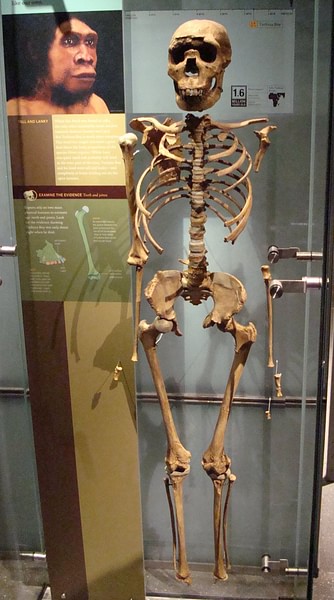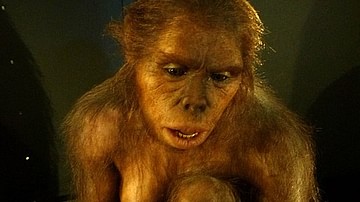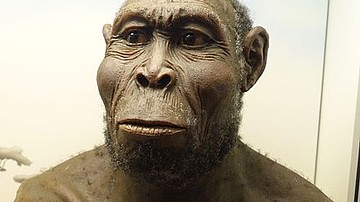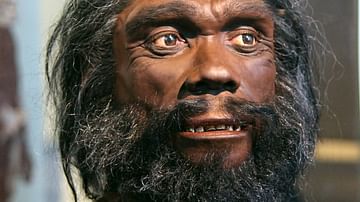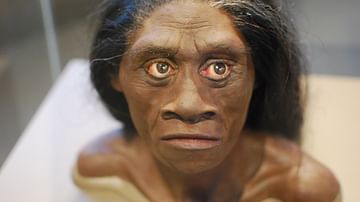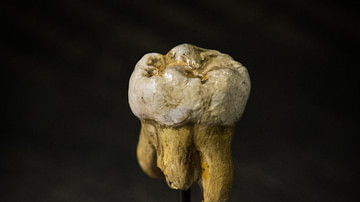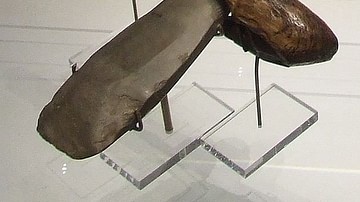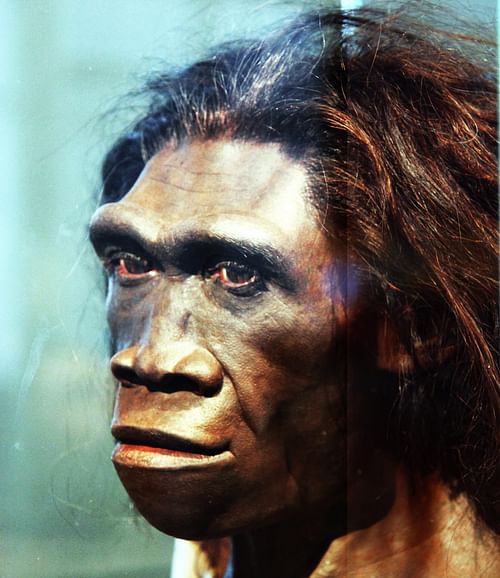
Homo Erectus, or 'upright man', is an extinct species of human that occupies an intriguing spot within the human evolutionary lineage. These prehistoric hunter-gatherers were highly successful in adapting to vastly different habitats across the Old World, as fossils connected with this species have been found ranging from Africa all the way to Southeast Asia. With the first remains appearing around 1,9 million years ago, and the latest ones surviving into the Middle Pleistocene, Homo erectus spanned an extraordinarily large time frame. However, the amount of variation between different fossils from different times and places has raised a lot of questions regarding the actual classification of the species, and its exact role in the evolutionary story.
Who Were They?
In the 1890s CE, fossils found by Eugène Dubois at the site of Trinil on Java, Indonesia, became the first to be classified as Pithecanthropus (now Homo) erectus. From that point on, many more Homo erectus fossils were found in Indonesia and then China, and from the 1960s CE on they were recognised in Africa. They most likely descended from an earlier species of Homo (most commonly thought to be Homo habilis), in East Africa or possibly Eurasia. Some part of this very widely spread species is thought to have given rise to later species such as Homo heidelbergensis, who are seen as connected to our own species of Homo sapiens.
The problem is, however, that the fossils that have been assigned to Homo erectus span an almost ridiculous amount of both time and space and show huge variations when they are all taken together. The question is whether they can actually be classified as one coherent species, or whether things should instead be narrowed down a bit further.
On the one hand, there are those who argue for a broad, single-species model (Homo erectus sensu lato), encompassing all or almost all fossils from Southeast Asia to Africa that have been chucked into this group so far. In this view, the variation falls within the range of an otherwise cohesive species, and might be due to the adventurous, globe-trotting nature of this species, with time and space impacting on their physiques. This broad definition is so convenient, though, that it becomes tempting to toss every new fossil find that seems to somewhat match the characteristics of erectus in with this bunch – which is obviously not necessarily an ideal way of going about things.
On the other hand, however, a narrower definition has been suggested that excludes either all of the African fossils, or at least the portion found at Koobi Fora, because they are quite a bit different and might be cohesive enough in their own right to be named Homo ergaster instead. Ergaster is then seen as the species that is linked with the lineage leading to Homo sapiens, whereas Homo erectus sensu stricto (in the strict sense, so only the Asian part) may have been a dead end.
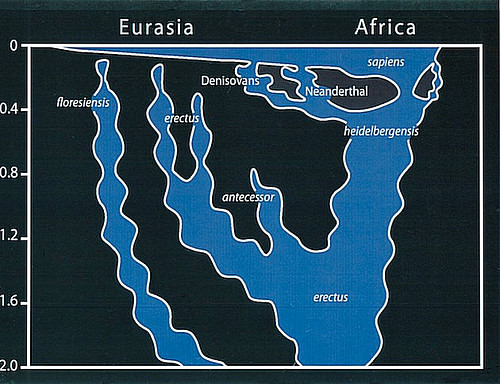
This discussion will no doubt continue to rage for some time yet - perhaps we just do not have all the pieces of the puzzle that are needed to disentangle this mess. At the moment, the verdict that seems to prevail is that the characteristics of the fossils do not present enough evidence to overturn the single-species hypothesis – so Homo erectus in the broad sense prevails. However, a word of caution must accompany this: just because erectus may have been this varied does not mean it should become a 'wastebin' species, with any and all fossils that do not seem to fit anywhere else simply being assigned to Homo erectus.
Geographical Spread
Fossils assigned to the broad definition of Homo erectus are found all the way from Southeast Asia to Africa. Areas and sites include Trinil on Java, Indonesia; China ('Peking Man'); Eurasia including Georgia, where finds at Dmanisi are so puzzling they seem to blur the lines between Homo habilis, Homo rudolfensis, and Homo erectus, and might even end up qualifying as a distinct species (Homo georgicus); East Africa (sites at for instance Olduvai Gorge and in the Turkana Basin in Kenya); as well as North- and South Africa. Some finds in western Europe have also at some point in time been lumped into the Homo erectus party, but there is now fairly broad agreement that most of these forms are better matches with Homo heidelbergensis.
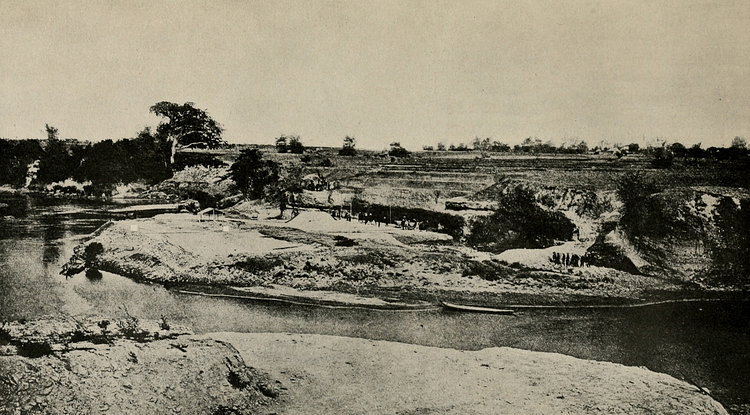
This early species of adventurers is generally thought to have started their marathon out of Africa, through the Middle East, the Caucasus and eventually East Asia around 1.9-1.8 million years ago, reaching Indonesia and China by ca. 1.7-ca. 1,6 million years ago. But what spurred them on? A 2016 CE study developed a model that suggests that Homo erectus followed the large herbivores during their dispersal, while also keeping an eye on flint deposits, and actively avoiding areas densely populated by carnivores, at least early on in their migration. However, since Homo erectus pops up more or less around the same time in East Africa and Eurasia, there is a chance that their origins lay in Eurasia instead - this could help explain the presence of Homo floresiensis in Indonesia, which has erectus-like traits. Either way, they spread very rapidly across the globe.
What Did They Look Like?
Homo erectus was both bigger and smarter than earlier humans. Their skeletons were basically pretty similar to ours – essentially modern – although they were stockier. They were the first humans to have limb and torso proportions along modern human lines, which allowed them to walk upright on two feet (hence the name) and literally trot the globe, and they had lost the climbing adaptions that allowed earlier humans to play Tarzan.
Considerably one-upping the earlier Homo habilis, Homo erectus not only had a visibly bigger brain than those before them, but it also grew larger as time increased. Early members of this species have cranial capacities between 600-800 cm3, but most later Homo erectus exceed 1000 cm3, which falls within the lower range seen in our own species. They had heavy brow ridges and a low cranial vault (so a more sloping head, without a proper forehead), and their teeth were already a lot smaller and more slender than those of earlier humans.
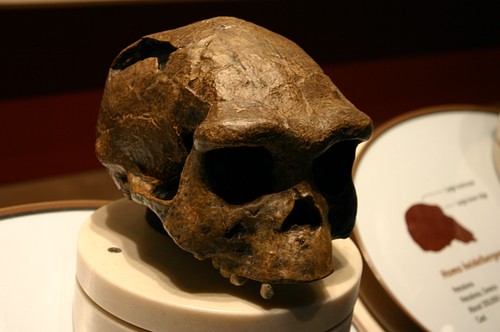
Way of Life
Homo erectus groups hunted and gathered their way to survival. Their larger bodies and brains required a lot of energy (i.e. food) to maintain them, but their increased brain size also helped them be smart about the way they sorted out their meals – a bit of a win-win situation. It seems they ate a diverse and broad diet, perhaps including tubers, and definitely a substantial amount of meat. Animal remains with clear cut marks left by butchery have been found in connection with Homo erectus, which shows they regularly accessed animal carcases - probably through both scavenging and hunting - from at least 1,75 million years ago.
Being part of the dawn of prehistoric Masterchef, it is likely that Homo erectus knew and used fire. The earliest evidence for the use of hominin fire dates back to around 1,8 million years ago, and from at least 500,000 years ago cooking began becoming popular. By 400,000 years ago, well within Homo erectus' time span, human species were visibly and deliberately handling fire. Hearths lit up the living spaces of these societies, and provided not just a means for cooking food (and thus increasing energy output) but also warmth, protection from predators, and were good hubs for social interaction. Natural shelters dominated the preferred forms of real estate, among which were overhanging cliffs and the highly popular caves.
An apt toolmaker, Homo erectus is associated with the Oldowan, but more commonly with the Acheulean stone tool industry, and is often connected with the creation of the very first hand-axes, which represent the first major innovation in stone tool technology. A broader set of tools would have helped Homo erectus survive across a wide range of environments.
When it comes to picturing Homo erectus around a hearth inside a cave, feasting on a professionally butchered bison steak with a spread of sides, we cannot tell whether they would have had proper conversations or not. Some social element must have been present, but language is a tough one to pin down. Anatomical clues cannot prove or disprove the ability for language or some sort of human-like proto-language in Homo erectus, and since there is no genetic material available for them, scientists cannot test for the FOXP2 gene, which is associated with language production in humans and is seen in both the later Neanderthals and Denisovans.
All in all, it is clear that Homo erectus provides a bunch of interesting developments as well as insights into the human lineage, and they may well have been the earliest species within this lineage to show so many human-like characteristics.
